Valve for ventilation - appointment, types and control
Normal air exchange in the room makes it possible to carry out normal life activity in it. In this case, use different ventilation systems - natural, combined or forced, as well as various devices. For example, air flow can regulate the throttle valve for ventilation, and to prevent fresh air, use a reverse type of device.
As you already understood, today we will discuss them, as well as other similar devices.
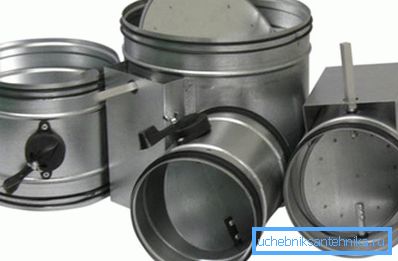
Purpose
Vent or air valves are part of the duct. Their design includes air damper, which can be adjusted in manual or automatic mode. Below we consider the function of these devices:
| Adjusting | With their help, it is possible to control the flow of air flow in a certain part of the ventilation system. This is done to configure the latter and to change the modes of its operation. The second name is the ventilation throttle valve. |
| Blocking | In this case, access to the supply air room is blocked if ventilation is turned off. |
| Keeping balance | A necessary function that controls the inflow and outflow of air masses when the air recirculation option is used. |
| Fire fighting | Can detain fire or smoke, for this purpose use special types of devices. |
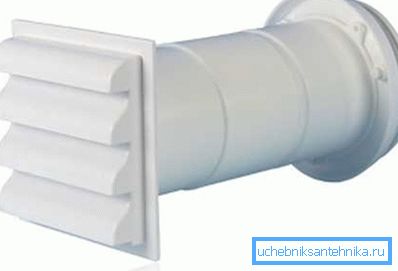
Kinds
The shape of the device depends on the section of the duct for which they are intended, most often it is round or rectangular.
Below we take a closer look at what each view is intended for.
Tip: Use this classification to select vent valves at an early stage.
- Inlet - is available with the possibility of manual or automatic adjustment of the position of the air damper. Used to control the volume of air masses passing through it, as well as to block the flow of air in a given area of the ventilation system or in case of shutdown of the ventilation system. You can install it yourself.
Tip: install devices to protect the ventilation system with automatically adjustable dampers that can be synchronized to automatically close or open devices when the ventilation system is turned off or on, respectively.
The design of the inlet throttle device of rectangular section consists of a frame, with dimensions corresponding to the section of the duct for which it is intended. It is equipped with several horizontal blinds, connected by a mechanical transmission with a drive. This makes them move synchronously, giving the opportunity to open the valve completely or hermetically close it.
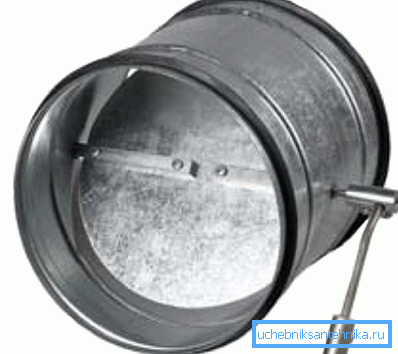
- Reverse or gravitational - eliminates the possibility of reversing the direction of the air flow.
Basically, such devices are installed in exhaust ducts to prevent:
- reverse air movement, which may occur under certain atmospheric conditions;
- cold air, insects, fluff and other allergens enter the premises if the fan is currently off;
- ingestion of foreign odors, including cooking food or smoke, from the ventilation shafts of other rooms or other floors.
The device will be closed in case of shutdown of the exhaust fan and open when it is turned on to discharge the exhaust air to the ventilation duct.
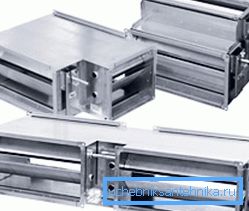
- Mixing chambers - designed to adjust the balance between fresh outdoor air and recirculation when using ventilation systems with recirculation of air flow.
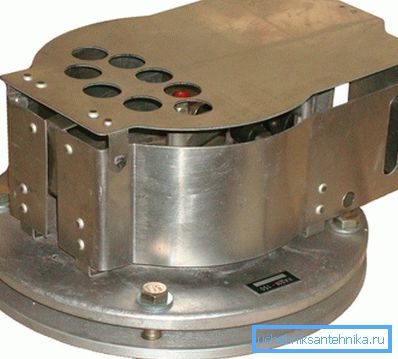
- Smoke removal - equipped with electric drives that are synchronized with the fire alarm system. They open the damper when fire alarms are triggered, giving way for smoke exhaust and allowing people to evacuate safely.

- Explosion proof - used in ventilation, which is designed to remove air streams containing a high concentration of explosive gas mixtures. In its design excluded the possibility of a spark during operation.
- Fireproof - A special kind of devices that prevent the spread of fire to other rooms on the ventilation system during a fire.
Control
To control the valves provided actuators. Their design involves manual and automatic adjustment of the flaps.
Consider the advantages of the latter:
- Synchronization with ventilation systems. The opening of the valves occurs at the time of their inclusion, and closing when the operation of the units.
- Use in emergency situations. For example, the overlap of air will prevent freezing of the water heater, in the case when it does not receive hot water. Thereby it will be possible to save time and money for the repair of equipment, the price for which is often quite high.
- Controlling the performance of the ventilation system from the central control panel. This approach saves energy in the winter, in addition, makes it possible to change the mode of operation at any time.
- Regulation of complex ventilation systems that air through large buildings with multiple ventilation valves.

Design
Typically, the flaps and the housing of the devices are subjected to strong pressure of air masses, this is especially felt in high-pressure ventilation systems. Because of this, the elements of most vent valves are made of high-strength galvanized steel, due to which there is no deformation of the devices during their operation.
One of the important requirements for devices is their ability to ensure high system tightness in the closed position of the valve.
Tip: use special seals for this, as well as a rubberized frame to connect with the air ducts.

The instruction allows the use of ventilation valves not only in the ventilation systems of the premises, but also for central air conditioning. As a rule, the adjustment of the power of air-conditioning for a single room in this case is very limited. Therefore, in the air ducts of the central air-conditioning system, valves are installed with automatic adjustment of their operation.
Conclusion
Today we reviewed the air valve for ventilation. We learned what form it can be, where and how it is applied, how it is regulated. Considered the advantage of automatic actuator control flap. We recommend using these devices in home ventilation and air conditioning systems.
The video in this article will help you find additional information on this topic.